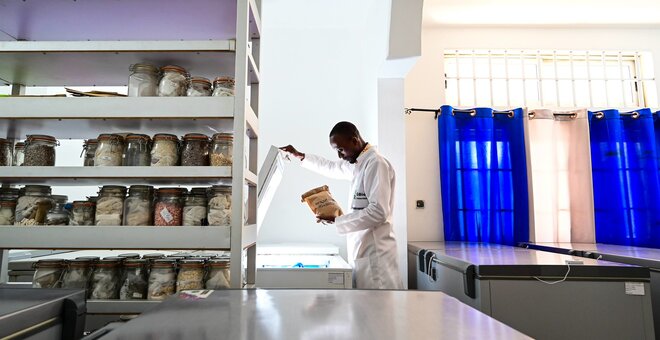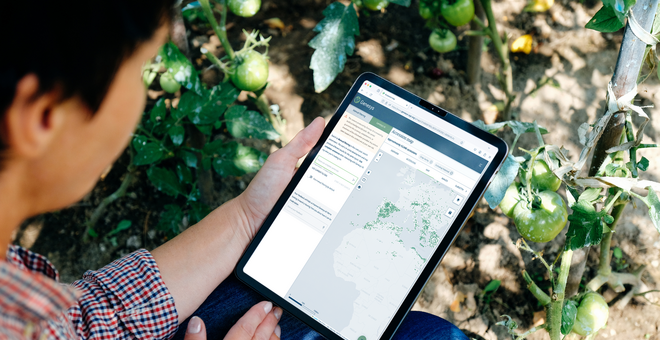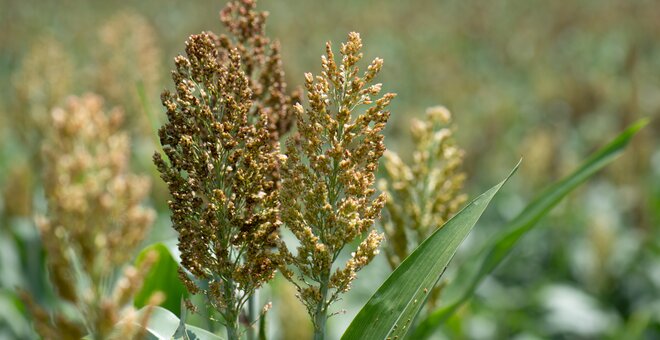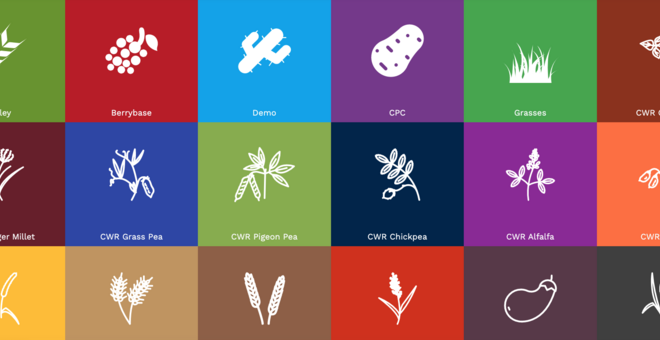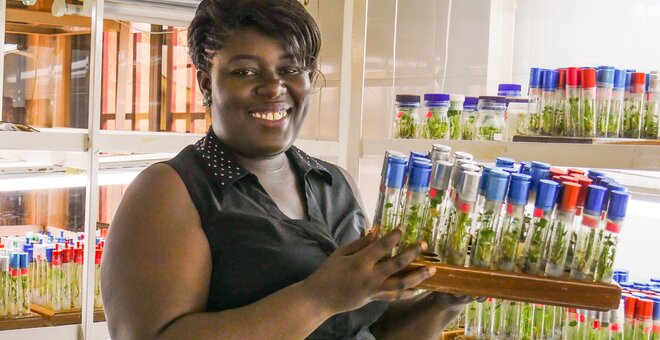Information Systems
There are over 5.9 million seed samples of hundreds of crop and forage species conserved in around 850 genebank collections worldwide. Keeping track of all these seed samples and their associated information—where they came from, where and how they are kept and how long they have been in storage since they were last planted out, for example—is a mammoth task. Genebank data and information systems are central to the effective conservation and use of plant genetic resources, and are a key focus of the Crop Trust’s work.
What is genebank data and why is it important?
Genebanks commonly keep collections of several different species of crop plants, maintaining hundreds and even thousands of different samples of seeds or other types of plant materials, such as plantlets growing in test tubes. There is a wealth of information that goes with each sample, from where and when it was originally collected, to what it looks like, to who requested and received samples, whether it be in the last month, last year or a decade ago. Keeping track of all this information is a monumental task, one that faces every genebank in the world, large or small.
And getting the most out of these collections means that users have to be able to identify samples that meet their needs, ideally from not just one genebank but from all those that have samples of the crop they are interested in.
What does the Crop Trust do to support genebank data and information systems?
Information systems and the data they hold are central to the conservation and use of crop diversity, whether at the level of the individual collection or globally.
The Crop Trust supports work on both types of systems. At the level of the individual genebank, the Crop Trust coordinates the development of GRIN-Global Community Edition (GGCE), a software that helps genebanks to manage their own operations and coordinate with other collections. At the global level, the Crop Trust supports the development and operation of Genesys, an online platform that allows genebank users and researchers to access information about seeds and collections across the globe. The Crop Trust also helps genebanks to upgrade their data and information systems, including both information technology and related human capacity.
GGCE and Genesys have benefited significantly from the partnership with the CGIAR genebanks through the Genebank Platform, as well as other projects.
Building technical and human capacity
The Crop Trust has invested strongly over the years in helping genebanks around the world to improve both their technical capacity to manage their collections and their skills, especially in the field of information management. Several projects have included capacity building in information management, including the Crop Wild Relatives Project and the Genebank Platform, and this is a key element of the current Seeds for Resilience Project and BOLD Project.
Support in this area has included assessing genebanks’ needs for upgrades to their information technology and procuring essential equipment, as well as providing training in data management.
GGCE: Facilitating genebank data management
All genebanks need sound data management to keep track of the inventories of seeds in their cold rooms and fields, and of all their interlinked processes. They also need to provide a searchable catalog for users to select the materials they want to order.
GGCE is an up-to-date, open-source, freely downloadable genebank information management software package that allows genebanks to manage their data and automatically track over time the progress of their collection management activities.
The development of GGCE is coordinated at the Crop Trust in collaboration with the Community of Practice on (genebank) Data Management, which was begun under the Genebank Platform.
Genesys: A window on the world’s genebank collections
Genesys is a database that allows users such as policymakers, plant breeders and researchers to explore the world’s crop diversity conserved in genebanks through a single website, helping them to obtain the data or identify and acquire seeds that they need. As of 2022, Genesys brings together data from more than 450 genebanks worldwide and more than 4 million seed samples, an estimated half of all crop diversity samples conserved in genebanks worldwide.
Genesys serves two distinct but connected groups of people.
There are the data providers, including genebanks, institutes and research centers, that use Genesys to standardize and share data on the material they maintain. Then, there are those—such as policymakers, plant breeders and researchers—who use Genesys to search for the material that best meets their needs, or perhaps overview data on collections. Once they have found the crop diversity they are looking for, users can request seeds and other planting materials from many of the genebanks holding them directly through Genesys.
The system is under continuous development, with new features being added continually. Updates on new features as well as data additions may be followed on the Genesys website.
Building technical and human capacity
The Crop Trust has invested strongly over the years in helping genebanks around the world to improve both their technical capacity to manage their collections and their skills, especially in the field of information management. Several projects have included capacity building in information management, including the Crop Wild Relatives Project and the Genebank Platform, and this is a key element of the current Seeds for Resilience Project and BOLD Project.
Support in this area has included assessing genebanks’ needs for upgrades to their information technology and procuring essential equipment, as well as providing training in data management.
Related news
Quality at the Heart of Crop Diversity Conservation
Every seed in a genebank is on a journey.
The journey starts when the seed is collected in the field, continues through various stages of cleaning and drying, takes a bit of a pause in long-term storage, and eventually continues...
21 Nov 2025
How Digital Tools Help Us Conserve the World’s Seeds — and Use Them
Imagine a library filled with millions of books. Some are decades old, while others are newly published. People can access these books to get information, investigate problems and come up with ideas for solutions to challenges....
17 Mar 2025
Virtual Workshop on "Unlocking" the Value in Germplasm Collections
Scientists from across the CGIAR, and its partner and donor organizations met in July 2021 to identify opportunities for enhancing use of crop germplasm collections.
Hosted by the CGIAR Genebank Platform, the workshop addressed...
22 Jul 2021
22 Jul 2021
Crop Trust Signs Landmark Agreement With Kenya’s National Genebank
As part of its Seeds for Resilience Project, the Crop Trust has signed the first of five major agreements with national genebanks in sub-Saharan Africa with the Kenya Agricultural and Livestock Research Organization (KALRO), which...
15 Jun 2021
15 Jun 2021
Germinate: Crop Data at Your Fingertips
Until all too recently, sharing information on genetic resources was a hugely inefficient process that made collaboration, at times, impossible.
The solution has been to create online repositories that offer easy-to-share data...
9 Jun 2021
9 Jun 2021
African Genebanks Move from Strength to Strength
Dr. Janny van Beem, the Crop Trust’s Quality Management Systems expert, uses the image of a staircase to illustrate how quality management is a gradual and continuous process: you build your way up, one step at a time, creating...
13 Jan 2021
13 Jan 2021


